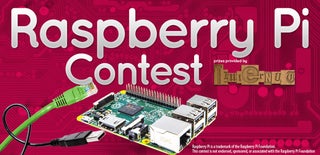Introduction: PipBoy 3000 (working)
So, this is a working PipBoy 3000. I have made this for the past two months and finally it's done.
The idea of own PipBoy just came to my mind since the Fallout game series got the latest game's fourth part, The Fallout 4.
Fallout 4 will launch on PS4, Xbox One and PC on November 10 2015.
So the case of the PipBoy is made purely by me with ScetchUp and TinkerCad.
I hope you enjoy the project as much as i did.
Please share if you make one! :)
If you see a Vote button somewhere in the upper right corner of the screen. Click it just for fun :)
The PipBoy is still some what a "work in process". I'l keep this project updated as soon as i make some alternations to it.
You can follow me on Twitter @MiskaKarvonen or in Youtube.
Find the model on the pictures on Twitter @laurakkarvonen ,Instagram Or here at Instructables.
Step 1: Design.
The design is based on the original PipBoy 3000.
The 3D model is made with SketchUp. SketchUp is a free program for home use.
I also used TinkerCad to make some final adjustments to the case.
SketchUp files are included in this step.
The process was long but finally i made it.
The original Wiki of the PipBoy is here.
Attachments
Step 2: Cura.
Load the .stl to cura and check that everything is in order.
The back part was printed without support.
The front part needs a support to print well.
The print time was relatively long. For about 4-5 hours per piece.
If you have thick arms i suggest to scale up the print.
Remember that if you scale the case up you will need a bigger screen to it. This scale is made for 2.8" screen.
Bigger parts mean more space also for more parts.
If someone likest to support my projects you can also buy the files from here https://www.redpah.com/product/1902/pipboy-3000-c...
Files can also be found in here
Step 3: Print.
The whole case is printed with Printrbot simple makers kit.
However this will not fit on original Printrbot. I have extended mine to use the whole print area.
It is a simple mod made basically from two old inkjet printers+few printed parts to it.
If you would like to learn more how to, just hit me up.
The settings i used for the printer:
-Nozzle 0.4mm
-1.75mm PLA plastic
-Print speed 60 mm/s
-Layer height 0.2mm
-Fill density 10-20%
Step 4: Fit.
See that everything fits nicely to the case.
If you need to make some final adjustments do them before painting the case.
Ordinary Dremell or some simple power tool cuts the plastic nicely.
Step 5: Electronics
These are the main (and needed) components:
-Raspberry pi A+ (if you print in bigger scale you can use B+. That means if B+ fits in there you can use pi 2 too)
-Adafruit 2.8" TFT screen (PiTFT)
-8 GB memorycard
-Few cables for the power input
Optional parts:
-Raspi camera for V.A.T.S (i could not fit a camera in my case. Too little room for it.)
I have tested the camera and it works great on this.
Step 6: Modify.
The case has a limited room for the screen and raspberry so we will have to hack a piece out of the PiTFT board.
Cut a piece out from the board like in the pictures.
This will not affect the screen itself in anyway. Just keep in mind that you will lose a few place meant for switches.
Step 7: Test.
Test out that everything works.
Just plug the screen on the raspi and give it a try. Make sure that the cable that is on the screen is hooked up good.
The PiTFT board is now about the same size as the raspberry pi A.
Step 8: Paint.
Paint the case.
I used a gold paint on the bottom to give the paint a nice gloss from under the second layer.
The upper layer is a thin layer just to make the gold paint a little bit grey. The grey paint is a car color paint with number 201600.
Make sure you paint in well ventilated area. Such as outside.
Let it dry well before lifting it up.
Step 9: Load Image.
I have compiled a image that should work right out of the box. If you run into problems you can find a punch of helpful links for troubleshooting bellow. If nothing works
The image can be found HERE.
The image is based on Adafruits image for PiTFT.
The image is modified with the needed programs and auto start to X. Also the Pipboy program is installed on it by default.
The Pipboy program is slightly modified from this Selectnone's python program. So all credit of this magnificent Pipboy program goes to him. I have only made the program more suitable for this projects needs.
If the program does not start automatically at start. Double click the "Main" file on the desktop.
Helpful links that helped me a lot when doing this image. Refer to these when running in to problems.
https://www.instructables.com/id/Raspberry-Pi-Launch-Python-script-on-startup/
https://93.93.130.214/forums/viewtopic.php?f=63&t=101969&p=706435
http://stackoverflow.com/questions/22353134/raspbe...
http://www.raspberry-projects.com/pi/pi-operating-...
http://www.opentechguides.com/how-to/article/raspb...
The last one is for using the touch screen for controlling things with gestures. AKA imitate the sings/numbers assigned to move in the screen
Step 10: Power.
Powering up the Raspberry from another source than the Micro-USB can be hazardous for the Raspberry.
Powering up the Raspberry from the GPIO pins will not use the Pi's original fuse that protects the pi from short circuit.
So be careful with this.
I used the pin's on the PiTFT's second row of pins.
Use only 5V for the input. No less or over. For the current part it would be best if the current would be somewhere between 700-1000mA.
I was going to make a typical regulator circuit for this but then i came with an idea of a simpler way.
Connect a simple USB cable to the pins and use a phone emergency charger as a battery. You will get a stable 5Volt line on it at it will last long. Just like one of these http://www.amazon.co.uk/Rolson-42982-Emergency-Mob...
It is also rechargeable so you can use it again and again.
Step 11: Fit.
See that everything fits up properly now that the electronics are inside.
If you printed bigger one, you can try to fit the camera module to it. It is really simple thing to do. Just go to Raspberry settings with " sudo raspi-config" and enable camera usage.
Attach the camera to the Raspberry and set the python program to use the camera.
This is done from /home/pi/raspipboy folder.
see your way to there and type " sudo nano config.py " to start the editor program.
Then set camera usage =true and save with Ctrl+x, push " Y " and enter to save the changes.
Start your program.
Step 12: Almost Done.
Well basically it is done now. Continue to the next part if you would like to make it look like more worn out Pipboy.
Step 13: Paint Some More.
Well. To be honest my painting skills haven't really moved forward since theMini Nes i did...
Anyhow. I smashed white, grey,black and red paint on the base paint to make it look more like worn out. I'm sure you can do a better job with it. To me it looks still fantastic tough :D
Step 14: Done.
Now the PipBoy 3000 is finally done. The PipBoy stays in wrist great with help of few rubber bands around it. One on the back and one on the front.
Go and use it just the way you like!
I hope you enjoyed the project as much as i did!
Happy buildings!

Fourth Prize in the
Halloween Props Contest 2015

Second Prize in the
Raspberry Pi Contest

First Prize in the
Epilog Contest VII
















